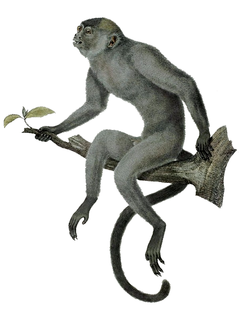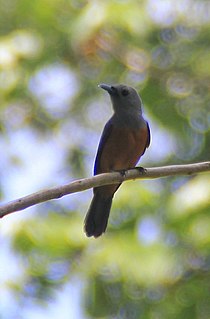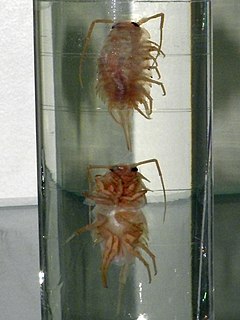
The ashy black titi, Plecturocebus cinerascens, is a species of titi, a type of New World monkey, endemic to Brazil. It was originally described as Callicebus cinerascens in 1823.

The ash-throated flycatcher is a passerine bird in the tyrant flycatcher family. It breeds in desert scrub, riparian forest, brushy pastures and open woodland from the western United States to central Mexico. It is a short-distance migrant, retreating from most of the U.S. and northern and central Mexico, spending the winter from southern Mexico to Honduras. This bird is also prone to wander, with single birds often seen outside its normal breeding range as far away as the east coast of North America.

The brushland tinamou is a type of Tinamou commonly found in high-altitude dry shrubland in subtropical and tropical regions of southern South America.

Irpex lacteus is a common crust fungus distributed throughout temperate areas of the world. It is the type of the genus Irpex. Irpex lacteus is considered a polypore, but depending on growth conditions it can also produce a hydnoid hymenophore. Due to this variability and abundance of the species it has been described as a new species to science numerous times and subsequently has an extensive synonymy. The complete genome sequence of Irpex lacteus was reported in 2017.
The Rarotonga starling is a species of starling in the family Sturnidae. It is endemic to the Cook Islands.

The grey antbird is a species of bird in the family Thamnophilidae. It is found in Bolivia, Brazil, Colombia, Ecuador, French Guiana, Guyana, Peru, Suriname, and Venezuela. Its natural habitat is subtropical or tropical moist lowland forests.

The Sumatran treepie or Sunda treepie is a species of bird in the family Corvidae. It is endemic to the island of Sumatra in Indonesia. Its natural habitats are subtropical or tropical moist lowland forest and subtropical or tropical moist montane forest. The Bornean treepie is sometimes considered to be a subspecies of this bird.

The white-browed forest flycatcher is a species of bird in the family Muscicapidae.

The island monarch is a species of bird in the family Monarchidae. It is found from Sulawesi to the Solomon Islands. Its natural habitats are subtropical or tropical moist lowland forests and subtropical or tropical moist montane forests.

The grey-bellied spinetail is a species of bird in the family Furnariidae. It is found in the South American countries of Argentina, Brazil, Paraguay, and Uruguay. Its natural habitats are subtropical or tropical moist lowland forests and subtropical or tropical moist montane forests.

The Bornean treepie is a passerine bird belonging to the treepies genus, Dendrocitta, of in the crow family, Corvidae. It is endemic to the island of Borneo. It is sometimes treated as a subspecies of the Sumatran treepie.

The greyish eagle-owl or vermiculated eagle-owl is a rather large owl of the northern part of sub-Saharan Africa. It was previously regarded as the northern form of the spotted eagle-owl.

Dillwynia cinerascens, the grey parrot-pea, is a plant in the pea (Fabaceae) family, native to Australia.

Selaginella cinerascens is a species of spikemoss known by the common names mesa spikemoss, gray spikemoss, and ashy spikemoss. It is native to Baja California as well as some locations just north of the border in San Diego County, California. It grows in dry habitat, often on clay soil, both in open areas and in the shade of larger plants. This lycophyte forms mats of spreading, forking stems up to 18 centimeters long. The plant is often gray or brown in color, forming a dull-colored carpet on the substrate. The linear or lance-shaped leaves are 1 to 3 millimeters long and lack bristles at the tips. The leaves are green when new or moist. They are flattened to the stem or stick out just a little. The strobili borne at the leaf bases are yellow in color and no more than 4 to 5 millimeters long.

Ligia cinerascens is a woodlouse in the family Ligiidae.
Vangueria cinerascens is a species of flowering plant in the family Rubiaceae. It is found from Tanzania to South Tropical Africa. The epithet is a Latin adjective meaning ash-coloured, referring to the indumentum on the leaves.
Paidia cinerascens is a moth of the family Erebidae. It was described by Gottlieb August Wilhelm Herrich-Schäffer in 1847. It is found in Asia Minor, Greece and on Crete.

Sybra is a genus of beetles in the family Cerambycidae, containing the following species:

Sybra umbratica is a species of beetle in the family Cerambycidae. It was described by Pascoe in 1865.

Sybra ordinata is a species of beetle in the family Cerambycidae. It was described by Bates in 1873.


















